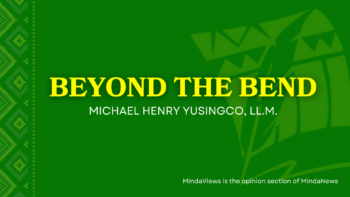ZAMBOANGA CITY (MindaNews/24 June) – Without a permanent job for years, 49-year old Romeo N. Manalo was hoping to finally land an employment when he heard that an organization was building a farming training center in their barangay more than four years ago.
Manalo’s dream, however, never materialized since the organization could not accommodate many in its staff. But the good thing was that the project introduced him to cost-efficient farming techniques that for three years now have enabled him to live a decent life and send his three children to college.
“It was more than a job,” he said in the Chavacano vernacular, referring to the learning he got from the Reach Out to Others Foundation (ROOF) of Western Mindanao State University, which maintains an organic farming training facility in the East Coast village of Bungiao.
According to Manalo, his learning has helped him turn his idle four-hectare farm land into a productive one by producing organically-grown cash crops that give him an average weekly income of P3,000.
“I use the money to send my children to school. Now, I’m proud that I don’t have to be dependent on anybody but myself since I have an income from my small farm,” he said.
Manalo did not keep his new knowledge to himself but has shared it other farmers in Bungiao.
“The benefit of going organic farming should spread particularly among those famers who are reeling from the high cost of production inputs, such as chemical-based fertilizers,” he said.
Manalo was initially trained on the proper method of using different types of organically-made fertilizers for certain crops.
Raw materials used in making organic fertilizer are mainly animal manure and crop residues. At least 90% of the raw materials are sourced from their own backyards.
“This is basically to protect the environment and for the promotion of eating safe and healthy foods.
On top of it, farmers can save money since the cost of farming inputs has decreased,” he said.
He has perfected the process of making organic-based fertilizers, but another problem has emerged: how to sell their goods.
“We have so many crops. The competition has reduced the market price. Worst, the continuing hike in fuel for the transportation of our goods is taking a toll on us,” he lamented.
He said that with the help of ROOF, they formed an association where they pool their crops before selling and made agreements on what each farmer should plant.
“A family should produce a crop that no other family is producing. In this way, everybody has a fair market share,” he said.
Since the conception of the Bunguiao Eco-Farm Park, several farmers associations whose members use organic fertilizers have been formed in Bungiao, said Renato Armando D. Yumol, ROOF’s project coordinator,.
He said their organization had trained farmers from eight sitios in Bunguiao.
He said they are also banking on Republic Act 100681 or the Organic Agriculture Act to promote organic farming.
The new law will create a comprehensive National Organic Agricultural Program that will promote organic farming methods among farmers and consumers.
The National Organic Agricultural Board will provide the direction and general guidelines for the implementation of the program.
Yumul said they are now talking to the City Agriculture Office for the training of other farmers throughout the city in organic farming.
“Part of the plan is to set up several bagsakan (drop-off point) centers for organically produced crops in farm villages here,” he said. (Darwin Wally T. Wee/MindaNews)
